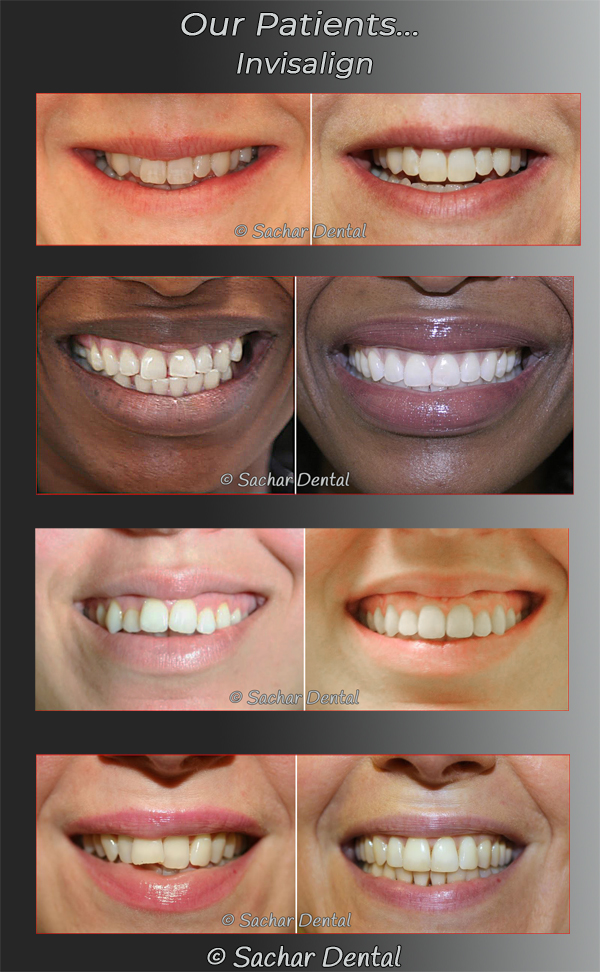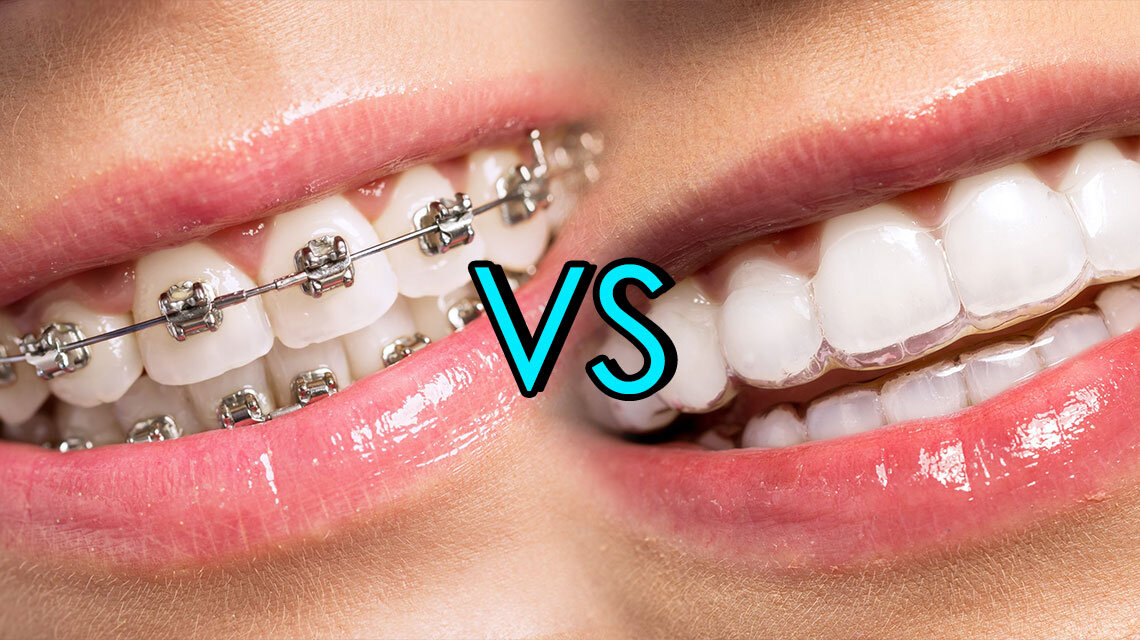Invisalign for Teens: A Modern Solution to Straightening Young Smiles
Invisalign for Teens: A Modern Solution to Straightening Young Smiles
Blog Article
Invisalign vs. Conventional Dental braces: Which Alternative Is Right for You?
When thinking about orthodontic therapy, the choice in between Invisalign and standard dental braces provides numerous essential factors that merit careful examination. Invisalign uses a very discreet choice with detachable aligners, while conventional dental braces offer an extra noticeable yet reliable service for serious imbalance. Each alternative encompasses distinctive benefits and drawbacks associated with visual appeals, convenience, treatment duration, and cost. Comprehending these nuances is vital for making a notified choice that aligns with your personal preferences and way of living. The concern stays: which choice will finest satisfy your orthodontic demands and expectations?
Summary of Treatment Options

In contrast, traditional braces consist of steel braces and wires that are adhered to the teeth. This method uses constant pressure gradually to attain positioning. While efficient for complex orthodontic issues, typical dental braces need normal visits for modifications and can posture difficulties in keeping oral health due to the difficulty of cleaning up about cables and brackets.
Both options have their qualities, and the selection frequently hinges on particular dental problems, way of living preferences, and patient compliance. Ultimately, speaking with an orthodontic expert is essential for determining the most suitable therapy strategy tailored to specific requirements. Recognizing the nuances of each choice can considerably affect the general success of orthodontic therapy.
Aesthetic Considerations
A substantial factor influencing the selection in between Invisalign and traditional braces is the visual charm each therapy offers. Invisalign aligners are crafted from clear plastic, making them basically undetectable when used. This very discreet appearance is specifically attracting adults and young adults who might really feel awkward about their orthodontic therapy. The capacity to maintain an all-natural smile throughout the alignment process can substantially improve the person's self-confidence in social and specialist settings.
In comparison, conventional braces contain steel braces and cords, which can be a lot more recognizable. While developments in orthodontic modern technology have actually led to the growth of smaller braces and tinted elastics, traditional braces still maintain an even more conspicuous profile. For some people, the exposure of dental braces might discourage them from looking for necessary therapy.
Inevitably, the choice between Invisalign and typical dental braces might depend upon personal preferences regarding aesthetic appeals. Clients that prioritize discernment frequently lean towards Invisalign, while those that are much less worried concerning presence might choose traditional dental braces. Comprehending the visual effects of each option is essential for making a notified choice that aligns with one's lifestyle and choices.
Convenience and Convenience

In regards to comfort, Invisalign aligners are detachable, allowing clients to enjoy their preferred foods without constraint and keep optimum dental health. Cleaning and flossing are streamlined, as the aligners can be taken out throughout these regimens, whereas standard braces need cautious maneuvering around wires and brackets.
In contrast, typical dental braces require normal changes, making them less hassle-free for those with hectic schedules. On the whole, the comfort and comfort of Invisalign make it an appealing choice for several people looking for orthodontic treatment.
Treatment Period and Effectiveness
While both Invisalign and typical braces work in fixing oral imbalances, the period of therapy can differ considerably between the 2 options. Commonly, Invisalign therapy can take anywhere from 12 to 18 months, depending on the complexity of the situation. The clear aligners work by gradually shifting teeth right into their preferred positions, and regular follow-ups with an orthodontist assistance make sure progression continues to be on the right track.
On the other hand, conventional dental braces typically call for a longer dedication, usually varying from 18 months to three years. This results from their set nature and Go Here making use of braces and cords, which can be more efficient for complex cases and serious misalignments (Invisalign). The treatment effectiveness of typical dental braces is well-documented, as they permit accurate adjustments and greater control over tooth movement
Inevitably, the choice in between Invisalign and conventional braces might rest on both the anticipated therapy duration and the specific oral issues handy. Consulting with an orthodontist is important, as they can supply customized suggestions based upon private needs, making certain the picked approach aligns with wanted timeframes and results.
Cost Comparison and Insurance Policy Choices
Price plays a significant function in the decision-making process for individuals thinking about orthodontic treatment, whether selecting Invisalign or conventional braces. On standard, the cost of Invisalign ranges from $3,000 to $8,000, while standard dental braces generally cost between $2,000 and helpful site $6,000. Aspects influencing these prices include the intricacy of the case, the period of therapy, and geographical place.
Insurance protection can significantly impact out-of-pocket costs. Several oral insurance coverage strategies give partial protection for orthodontic treatments, but the specifics can differ extensively. It is crucial for people to evaluate their insurance coverage to establish the degree of coverage for either alternative. Generally, traditional dental braces might be a lot more regularly covered by insurance coverage strategies contrasted to Invisalign, which some insurers categorize as an aesthetic treatment.
Furthermore, several orthodontic techniques supply versatile layaway plan, making both therapy options a lot more easily accessible. Clients ought to ask about prospective financing alternatives and discounts for ahead of time settlements. Assessing the overall price, consisting of insurance coverage benefits and layaway plan, is crucial for making a notified choice that lines up with both visual preferences and budget considerations.

Conclusion
In summary, the option between Invisalign and traditional dental braces depends upon several variables, consisting of visual choices, convenience, treatment period, and cost. Invisalign supplies a discreet, detachable option that assists in dental hygiene and nutritional flexibility, while standard dental braces might be more appropriate for intricate oral problems and frequently come at a lower cost point. Inevitably, appointment with an orthodontist is necessary to assess private conditions and identify the most appropriate treatment option for accomplishing optimal oral positioning.
When taking into consideration orthodontic treatment, the option between Invisalign and conventional dental braces offers numerous vital elements that merit mindful analysis.Contrasting Invisalign and standard braces exposes unique therapy alternatives for orthodontic correction.While both Invisalign and traditional dental braces are effective in correcting dental misalignments, the duration of therapy can vary considerably between the 2 alternatives.Cost plays a significant function in the decision-making procedure for individuals taking into consideration orthodontic treatment, whether choosing for Invisalign or traditional dental braces.In recap, the option between Invisalign and conventional dental braces hinges on multiple variables, consisting of visual preferences, comfort, treatment duration, and cost.
Report this page